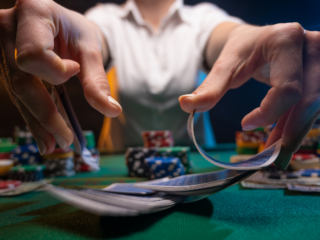
There’s no surefire way to know exactly which cards will be dealt after a shuffle, but there are some methods you can use to get a general idea. One method is to look at the top card of the deck before it’s shuffled; if it’s a low-value card, chances are that most of the other cards will be low-value as well. Another method is to peek at the bottom card; if it’s a high-value card, the rest of the deck is likely to be filled with high-value cards. Finally, you can try to count how many times the dealer shuffles the deck; if they shuffle more than three times, it’s likely that the deck is full of high-value cards. Whichever method you choose, remember that there’s no guarantee that you’ll be able to accurately predict which cards will be dealt after a shuffle.
What cards are in after being shuffled
How many cards are in after being shuffled? This is a question that has been asked by many people and the answer is not so simple. The actual answer to this question depends on a number of factors, including the type of shuffle that was used. In this blog post, we will take a look at the different types of shuffles and how they impact the number of cards in the deck. We will also provide some examples to help illustrate how this works. So, what are you waiting for?
In the game of poker, when you are shuffling the cards there is a certain order in which they need to go. This applies to all card games, not just poker. In this blog post we will take a look at what that order is and why it matters. If you’re anything like me, then you may have wondered about this before but never bothered to look it up. Well now’s your chance! So without further ado, let’s take a look at the order in which cards are in after being shuffled.
Shuffle a deck of cards
The first thing you need to do is gather a deck of cards. It doesn’t matter if they are all the same or not, as long as there are 52 cards in total. Once you have your deck, it’s time to start shuffling them. But before you do, it’s important to know that there are two types of shuffles: overhand and riffle.
An overhand shuffle is the most common type of shuffle used in card games. It’s also the easiest to do. To perform an overhand shuffle, hold the deck of cards in your left hand and use your right hand to grab a handful of cards from the top of the deck. Next, place those cards on the table in front of you and grab another handful of cards from the top of the deck. Continue doing this until all of the cards have been shuffled.
Deal out the cards face down in a row
Starting with the card on the far left, turn the first card over and set it in front of you. Then, take the second card and place it face down on top of the first card. Continue doing this until all of the cards have been dealt out.
When you’re finished, you should have a row of face-down cards in front of you. Now, it’s time to start guessing!
As we mentioned before, there is no surefire way to know exactly which cards will be dealt after a shuffle. However, there are some methods you can use to get a general idea.
Turn over the first card – this is your first card
If the first card is a low-value card, chances are that most of the other cards will be low-value as well.
One method is to look at the top card of the deck before it’s shuffled; if it’s a low-value card, chances are that most of the other cards will be low-value as well. Another method is to peek at the bottom card; if it’s a high-value card, the rest of the deck is likely to be filled with high-value cards. Finally, you can try to count how many times the dealer shuffles the deck; if they shuffle more than three times, it’s likely that the deck is full of high-value cards. Whichever method you choose, remember that there’s no guarantee that you’ll be able to accurately predict which cards will be dealt after a shuffle.


